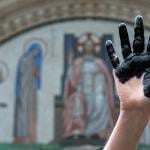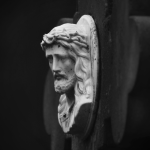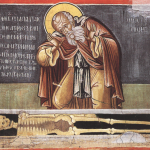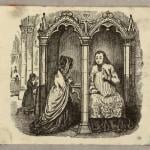HORROR BITES: Below, you’ll find five short-ish posts about same-sex marriage, of which I think “Heather Has No Daddy” is the most important. You’ll also find a blogwatch with some comments about superhero-comic conventions. Now I’m going to blog some random comments on horror that didn’t make it into my big “Rene Magritte, Master of Horror” post below.
The Old Oligarch and I talked about this quite a bit while I was working on the Magritte post. His comments included the idea that horror is when “the parts are still there, but it’s gruesome because what supports them is missing.” There’s quite a bit of that in Magritte, I think, but I’m too tired to work it out….
More scrutably, he suggested that horror is about “chastising overreaching appetites. Man searches for justice in the natural level, but it doesn’t happen there, so it has to happen symbolically via horror.” (He’s getting this from E. Michael Jones’s Monsters of Id; what little I’ve read of Jones didn’t impress me, but this particular insight sounds absolutely right to me.) Readers of my short fiction (you only get the first scene, because my archives are Bloggered…) will probably not be surprised that horror’s overblown, outraged, anguished, bloody-minded response to a world “where nothing is ever put straight” really resonates with me.
O.O. added that horror often involved “gross magnification of one aspect of man”; he used the first “Terminator” movie as an example of the gross magnification of the unconstrained will. The Terminator is “like Kant on steroids, all it knows is duty and will. And it’s terrifying because there are no limits to that. It never gets tired or despondent, it just wants to kill you.”
For his part, Sean Collins, in his senior essay (PDF–I’ve started to read it but haven’t finished–maybe tonight), identifies dread as the key feature of horror. It’s the opposite of suspense–you’re not wondering what will happen, you know what will happen, and it is going to hurt.
He also writes about a certain kind of horror imagery, which comes in two varieties (I’m doing this from my notes, since I can’t cut-and-paste from a PDF, so please let me know if I get it wrong): 1) a being in a place where no one ought to be, in defiance of laws of possibility; 2) a “monumental, monolithic, or statuesque object, serving as a testament to the presence of evil, madness, sickness, or irrationality.”
For #1 you should picture the two twin girls from “The Shining” (“Come and play with us”)–unmoving, not threatening or attacking Danny, brightly-lit, but wrong. Magritte does this all over the place. Elements of this kind of image include: everyday appearance; lack of visible threat or even action (its mere presence is what’s wrong or a sign of what’s wrong); an onlooker in the movie, in this case Danny.
Anyway, I have no particular conclusions to draw from this, just wanted to get those scraps onto the blog, perhaps to be woven into a coherent narrative later.
In a bit, I’ll post the ten scariest and/or most horrific movies I’ve seen, and try to figure out to what extent they fall into these categories.











